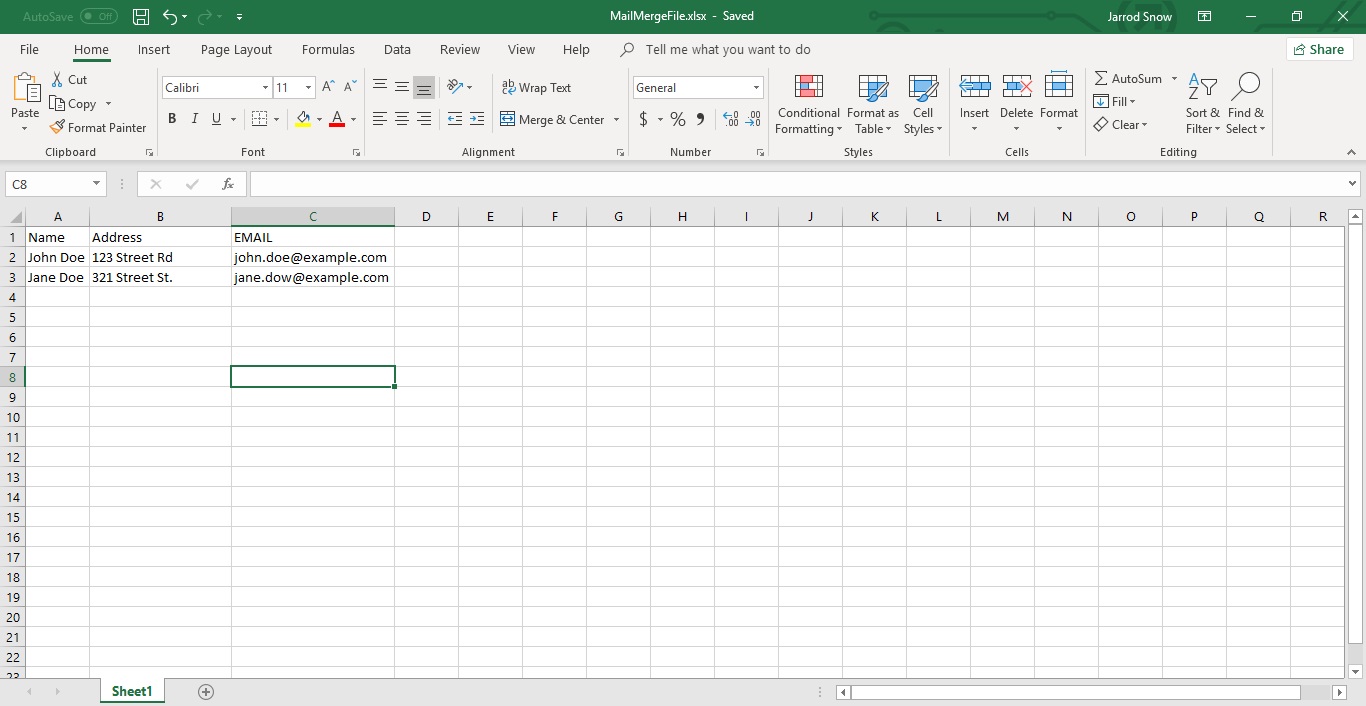

- Mail merge from excel to email how to#
- Mail merge from excel to email update#
- Mail merge from excel to email software#
- Mail merge from excel to email code#
Mail merges can save you a ton of time, and there’s many situations in which you may find them useful. In more advanced mail merges, you can bring in other data fields to make the email even more personal.
Mail merge from excel to email software#
Either through software or using a spreadsheet (like in the example below), you can use the main part of your message and easily customize it with different recipients’ names and email addresses. Creating Additional Columns in the Google SheetĪ mail merge is a tool or process that takes the legwork out of sending these types of messages.

Mail merge from excel to email how to#
Mail merge from excel to email code#
Add a line to your code that links in the data source before executing the mail merge. The data source can be removed from the document by choosing the option to open the document without allowing the mail merge (the button labelled "No" in the version of Word I'm looking at). If the user allows the VBA to run, then supposedly the entire project is trusted, so attaching the data source using code is allowed. The advantage to this approach is that it upholds Word's security setting.

The prompt ensures that the user is aware of this and (supposedly) only runs the mail merge if the document is from a "trusted source". Note that the prompt is a security measure since the SQL a mail merge runs could cause harm to a system. There are two basic approaches that can be used to run a mail merge without triggering the prompt. Wouldn't it better to use early bind of the word object? Set wdDoc = GetObject(MMFileName, "Word.document")Īlso all of the examples I have seen use late binding. How do I get this to work? Public Sub RunMailMerge(MMFileName As String) When run Word opens and I get the same prompt. I put together the following code from examples on this forum but is not working. What I want to do is have the Excel spreadsheet run the mail merge without any user intervention when I click a button. When I open the word doc I get a prompt that says "Opening this document will run the following SQL command", etc, etc. I have a Word mail merge document that is all set up to run. I have a spreadsheet that has data that is used in a MS mail merge.
Mail merge from excel to email update#
I know this has been asked before and I tried to update the other thread but was not allowed.


 0 kommentar(er)
0 kommentar(er)
